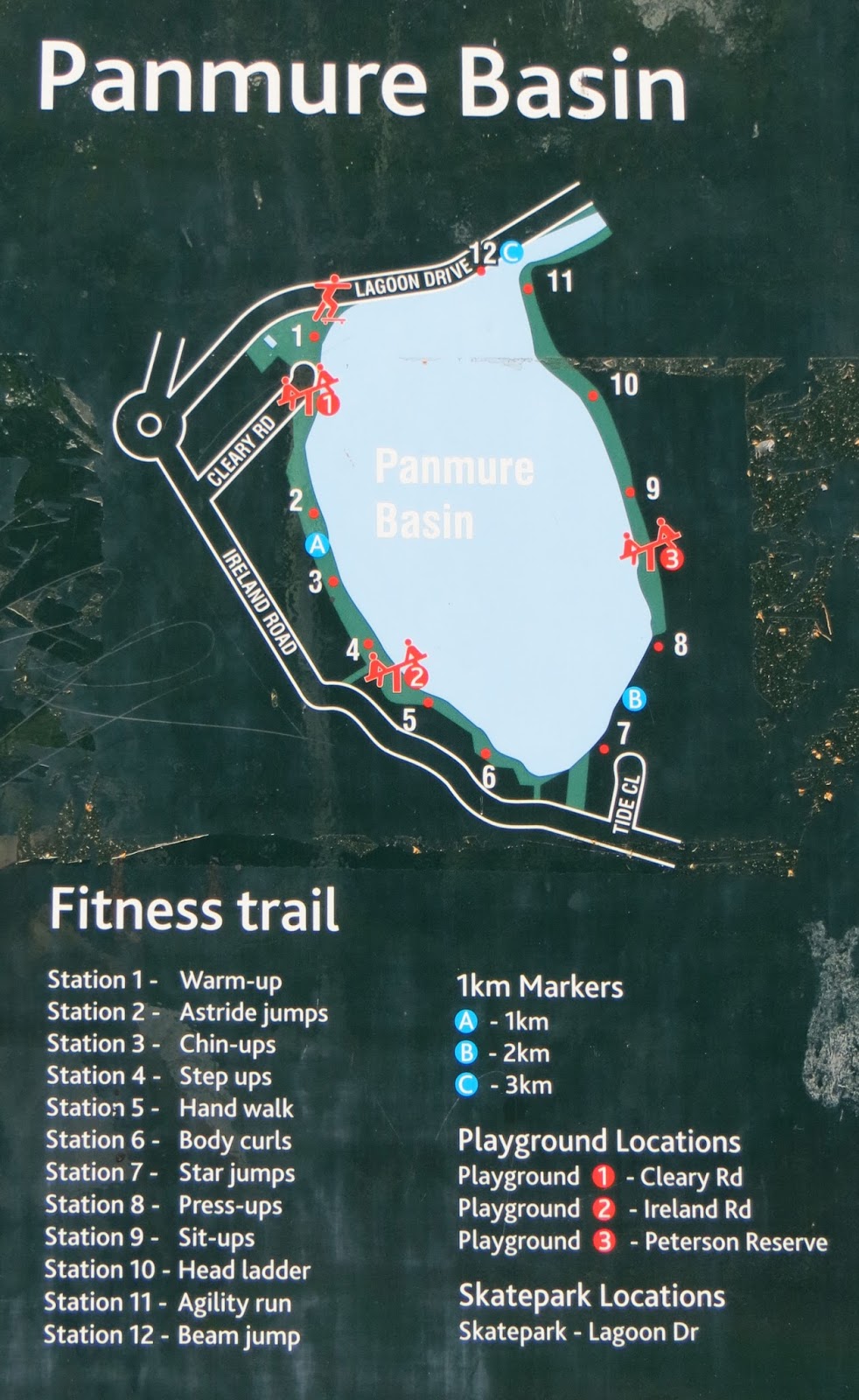As you walk along the banks of this tranquil
tidal lagoon today, it’s difficult to imagine the ear-piercing roar and
life-threatening explosions that created it at least 18,000 year ago. For the Panmure Basin
is a 1.5-kilomtre-wide explosion crater, yet another example of Auckland
According to that most excellent book Volcanoes of Auckland,
the almost perfectly circular basin was formed by a series of wet eruptions
that spewed out a large quantity of the broken-up sandstone through which it
erupted, as well as huge clouds of volcanic ash. The sandstone formed the 25-metre-high
tuff ring that can still be seen encircling the basin, though most of the rock
is now covered by shops and houses.
 |
| The basin from nearby Maungarei -- Mt Wellington. |
Following the wet eruptions came a period of dry
fire-fountaining, though the scoria cone this formed is now buried under mud and
silt within the water-filled explosion crater. Water accumulated in the crater
after the volcano ceased erupting, initially forming a freshwater lake but,
after the north-eastern corner of the tuff ring eroded and sea levels rose at
the end of the last Ice Age (about 8000 years ago), sea water entered the
crater and Panmure Basin became the tidal lagoon we see today.
Maori people named the basin Te Kopua Kai a Hiku
(‘the eating place of the guardian taniwha Moko-ika-hiku-waru’) as they believe
a taniwha (a water monster) guards these waters. Over time, this title was
shortened to Mokoia, which was the name given to the pa (fortified or defensive
settlement or village) situated at the northern entrance to the lagoon in the
early 1800s.
After the local Maori people were killed by
marauding tribes from the north in 1821, the pa lay abandoned until a European
settler, James Hamlin, began to farm the fertile land in the late 1830s. Other
settlers followed, including, from 1848, one of the groups of Irish military
pensioners (known locally as the Fencibles) who were brought to New Zealand to establish a military base for the
defence of the expanding city of Auckland
Today, Panmure is an interesting mix of large
industrial factories, ethnically diverse and cheap shops and restaurants, and
domestic residences, the more upmarket of which can be seen around the southern
side the lagoon.
The walkway around the basin can be accessed from
several places in the surrounding streets, from the aptly named Lagoon Drive Cleary Street Ireland
Road
Mature trees line the path in many places,
providing a pretty display of autumn colour at this time of year, and patches
of mangrove forest dot the water around the edges of the basin. The clubrooms
of the Panmure Lagoon Sailing Club sit on the north-western shore and the Auckland Society of Engineers on the
south-eastern shore – the latter operates a miniature railway on Sunday afternoons,
weather permitting. The only blot on the landscape is a series of large
electricity pylons plonked right on the southern side of the basin – what
planning idiot made that decision?!
Birdlife is plentiful and a delight to watch. As
well as the more common birds found in every Auckland garden, I saw perhaps 6
white-faced herons, several ducks, both red-billed and black-backed seagulls,
some little pied shags successfully fishing, and a flock of about 40 little
pied stilts. According to the signage, white heron have been known to roost in
the trees around the basin and there is a well-established colony of pied shags
nesting in the trees adjacent to the outlet channel.
 |
| A small flock of pied stilts |
 |
| Left, a white-faced heron and, right, a little pied shag |




No comments:
Post a Comment